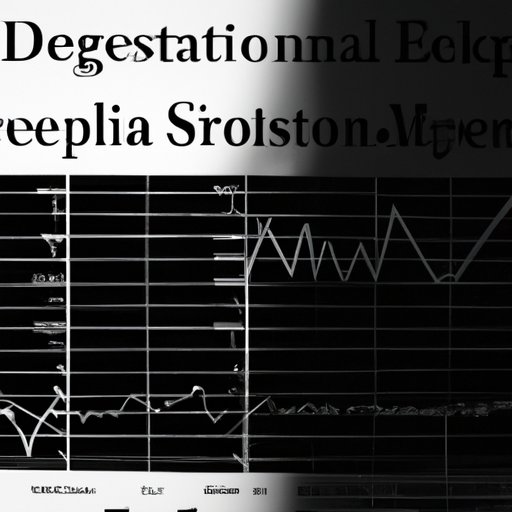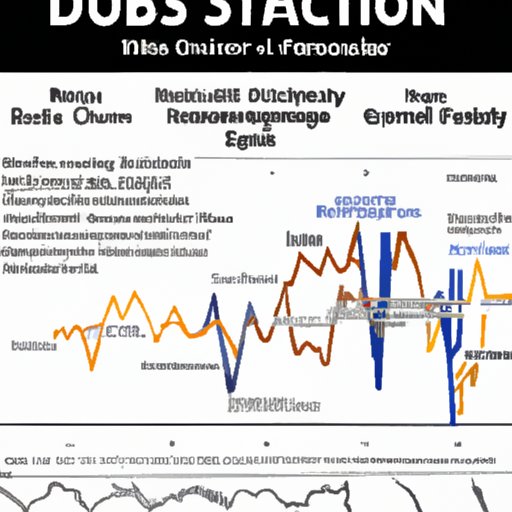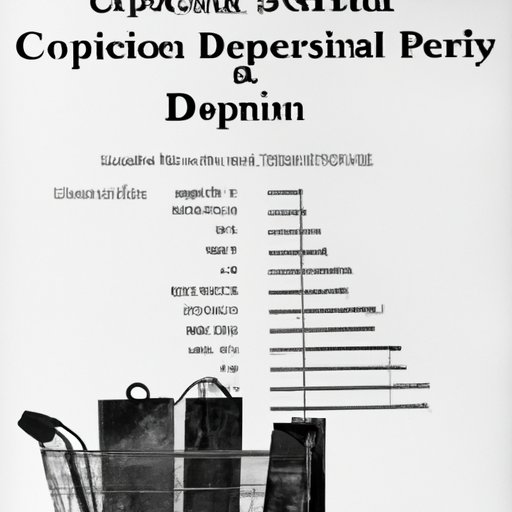Introduction
The Great Depression was one of the most devastating economic crises in modern history, lasting from 1929 to 1939. It caused massive unemployment and poverty, with some estimates claiming that up to 25% of the population was unemployed at its peak. As a result, it had a huge impact on global economies and politics, with long-lasting effects that are still felt today.
In order to understand the causes of the Great Depression and how it could have been prevented, it is important to analyze it from an economic perspective. This article will explore the various factors that led to the economic downturn, as well as the impact of these factors on the economy.

Analysis of the Great Depression from an Economic Perspective
There were several factors that contributed to the economic downturn during the Great Depression. The most significant of these were the stock market crash, Federal Reserve policies, the Smoot-Hawley Tariff Act, and consumer spending.
Stock Market Crash
The stock market crash of 1929 was one of the main causes of the Great Depression. The crash occurred when investors panicked and sold off their stocks in large numbers, resulting in a sharp decline in stock prices. This caused a cascade of events, including banks failing, businesses going bankrupt, and people losing their jobs.
Federal Reserve Policies
The Federal Reserve was also responsible for contributing to the economic downturn. The Fed’s policies in the 1920s created a deflationary environment, which made it difficult for businesses to expand and hire new workers. Additionally, the Fed failed to respond appropriately to the crisis, instead raising interest rates and tightening credit, further exacerbating the problem.
Smoot-Hawley Tariff Act
The Smoot-Hawley Tariff Act of 1930 was another key factor in the Great Depression. The act raised tariffs on imported goods, resulting in a decrease in international trade and causing a ripple effect throughout the economy. This resulted in increased prices, decreased demand, and further job losses.
Consumer Spending
Finally, consumer spending played a major role in the Great Depression. As people lost their jobs and incomes declined, they cut back on spending, resulting in a decrease in aggregate demand. This further weakened the economy and led to further job losses.

Historical Overview of the Leading Causes of the Great Depression
In order to fully understand the causes of the Great Depression, it is important to look at the historical context in which it occurred. Several factors contributed to the economic downturn, including unequal distribution of wealth, deflationary pressures, bank failures, and poor government policies.
Unequal Distribution of Wealth
During the 1920s, wealth was concentrated in the hands of a small number of individuals, while the majority of the population struggled to make ends meet. This inequality meant that there was not enough money in circulation to sustain economic growth, leading to an economic slowdown.
Deflationary Pressures
The economy was also suffering from deflationary pressures, meaning that the value of money was decreasing. This made it difficult for businesses to expand and hire new workers, resulting in a decrease in aggregate demand.
Bank Failures
The banking system also played a role in the Great Depression. Banks were overleveraged, meaning that they were investing more money than they had on hand. When the stock market crashed, many banks were unable to pay back their loans, resulting in a wave of bank failures.
Poor Government Policies
Finally, the government’s policies exacerbated the economic downturn. The Federal Reserve’s policies in the 1920s created a deflationary environment, while the Smoot-Hawley Tariff Act of 1930 caused a decrease in international trade. Additionally, the government’s response to the crisis was inadequate, further weakening the economy.
Examining the Role of Government Policies in Exacerbating the Great Depression
The role of government policies in exacerbating the Great Depression cannot be understated. Several government policies had a direct impact on the economy, and their failure to respond adequately to the crisis only served to worsen the situation.
The Role of the Federal Reserve
The Federal Reserve was responsible for creating a deflationary environment in the 1920s, which made it difficult for businesses to expand and hire new workers. Additionally, the Fed failed to respond appropriately to the crisis, instead raising interest rates and tightening credit, further exacerbating the problem.
The Impact of the Smoot-Hawley Tariff Act
The Smoot-Hawley Tariff Act of 1930 was another key factor in the Great Depression. The act raised tariffs on imported goods, resulting in a decrease in international trade and causing a ripple effect throughout the economy. This resulted in increased prices, decreased demand, and further job losses.
The Impact of the Stock Market Crash on the Economy
The stock market crash of 1929 was one of the main causes of the Great Depression. The crash occurred when investors panicked and sold off their stocks in large numbers, resulting in a sharp decline in stock prices. This caused a cascade of events, including banks failing, businesses going bankrupt, and people losing their jobs.
The long-term effects of the crash were devastating. It caused widespread unemployment, poverty, and a decrease in consumer spending. Additionally, it eroded confidence in the stock market, resulting in a prolonged period of economic stagnation.
Exploring the Role of the Federal Reserve in Contributing to the Great Depression
The Federal Reserve was also responsible for contributing to the economic downturn. The Fed’s policies in the 1920s created a deflationary environment, which made it difficult for businesses to expand and hire new workers. Additionally, the Fed failed to respond appropriately to the crisis, instead raising interest rates and tightening credit, further exacerbating the problem.
The Influence of the Smoot-Hawley Tariff Act on the Economy
The Smoot-Hawley Tariff Act of 1930 was another key factor in the Great Depression. The act raised tariffs on imported goods, resulting in a decrease in international trade and causing a ripple effect throughout the economy. This resulted in increased prices, decreased demand, and further job losses.

An Examination of the Role of Consumer Spending in the Great Depression
Consumer spending also played a major role in the Great Depression. As people lost their jobs and incomes declined, they cut back on spending, resulting in a decrease in aggregate demand. This further weakened the economy and led to further job losses.
Conclusion
The Great Depression was a devastating economic crisis that had far-reaching consequences. Its causes were numerous and varied, but the most significant were unequal distribution of wealth, deflationary pressures, bank failures, poor government policies, the stock market crash, Federal Reserve policies, and consumer spending.
In order to avoid similar economic crises in the future, governments must ensure that there is a more equitable distribution of wealth and that monetary and fiscal policies are managed properly. Additionally, they should take steps to ensure that the banking system is stable and that consumer spending is encouraged.
(Note: Is this article not meeting your expectations? Do you have knowledge or insights to share? Unlock new opportunities and expand your reach by joining our authors team. Click Registration to join us and share your expertise with our readers.)
